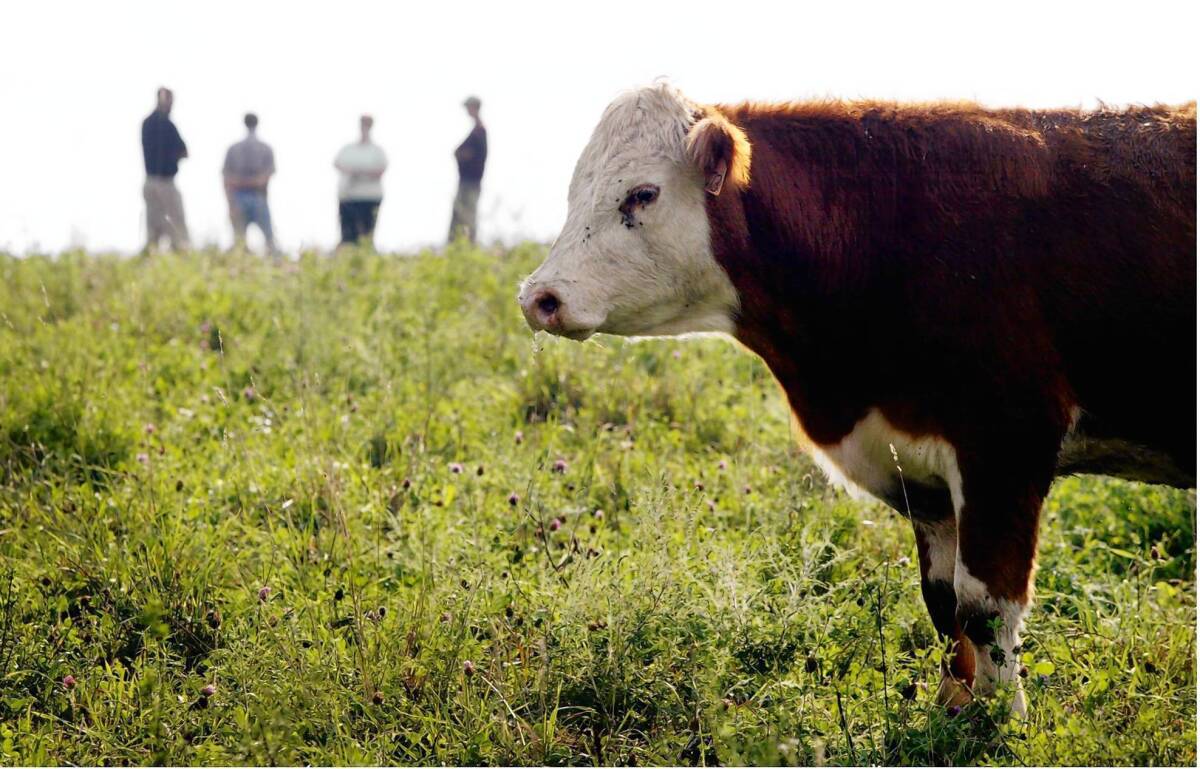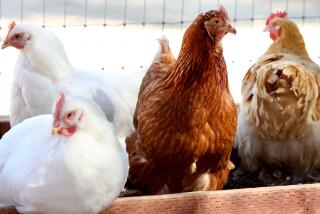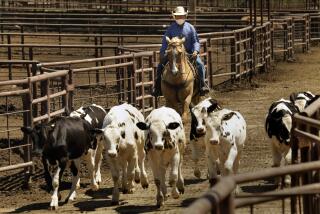Demand for grass-fed beef is growing

Jeremy Parker is a rancher who raises his cattle the old-fashioned way. His herd feeds on grass.
“There’s definitely growing demand” for grass-fed beef, he said. “There’s more demand than there is availability.”
Although still only about 3% of the beef consumed in the U.S., grass-fed beef will keep rising in popularity, advocates, consumers and producers predict. One study put demand growth at 20% a year.
“It’s expanded dramatically,” said Alan Williams, a grass-fed beef producer and member of the Pasture Project, an effort to get more conventional producers in the Midwest switching to pasture-based systems. “In the late 1990s there were only 100 producers. Now there are more than 2,000. The market has grown from being $2 million to $3 million to over $2.5 billion in retail value.”
Most cattle raised in the U.S. are sent to feedlots, in Kansas and Nebraska mostly, where the animals are fattened and “finished” on a diet of corn and other grains.
This feedlot system has enabled the country to develop its massive beef industry cheaply, efficiently and with less manpower.
Cattle ranchers contend that a wholesale, or even partial, transition to a grass-based system would be impractical and would drive up costs.
In recent years, however, critics of the feedlot system say the industry’s growth has come at too high a cost for the environment, for human health and for the animals themselves.
About 40% of the country’s corn now goes to livestock, helping make corn the most grown, and most valuable, crop in the country. But corn production is nitrogen-intensive, and critics say that run-off from nitrogen fertilizer has contributed to polluted waterways, most notably the growing “dead zone” in the Gulf of Mexico.
At the same time, cattle’s corn-centric diets have contributed to fattier, less-nutritious beef that is higher in cholesterol and lower in good fatty acids, some say.
Because the cost of that beef is relatively low, consumers can afford to eat more of it, often in the form of fast-food burgers.
“Basically, it comes down to time,” said Patricia Whisnant, president of the American Grassfed Assn., and a Missouri producer whose Rain Crow Ranch is among the largest grass-fed beef operations in the country. “You take an animal off of pasture, you give him antibiotics and corn, you’re looking at harvesting that animal in 12 to 14 months. On grass, you’re looking at 24 months, and more likely 28.”
Altogether, these factors appear to be getting the attention of consumers who are willing to pay a premium for grass-fed beef. Producers and retailers are responding.
Until recently, most grass-fed beef was sold directly by the producer to the consumer, who often arranges to buy a whole side of beef through a special arrangement. Some grass-fed beef is also sold directly through buyers clubs.
But now it’s becoming a bigger business, with some supermarket chains now stocking grass-fed beef.
Gustin writes for the St. Louis Post-Dispatch






